FNC 2020: A Report From My Apartment
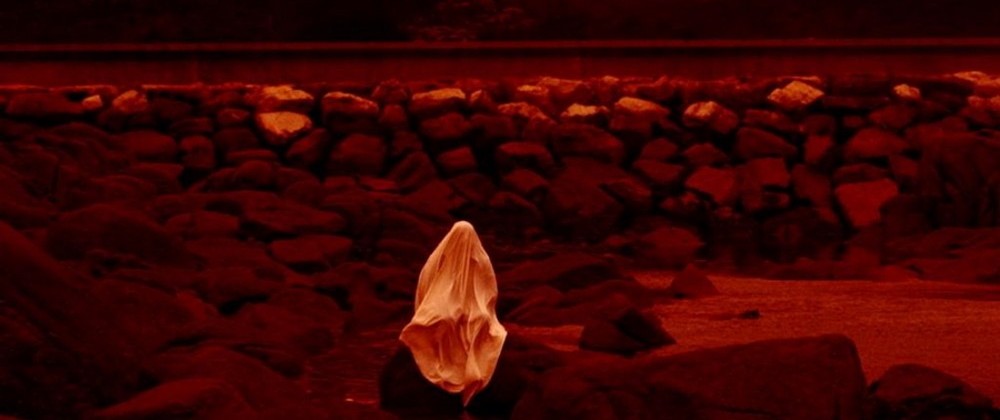
Last year’s Festival du Nouveau Cinéma marked the 49th year the honourable institution sought to bring all the riches of global art cinema to our fair island city. However, it will stand out in the fest’s long and storied history as the first year without a single projected film (outdoor projections scheduled at the airport unfortunately had to be cancelled due to strong winds). This is not due to new advancements in the art of cinema, but of course because of the ongoing pandemic which forced us all back inside a few weeks before the festival proper and for much of the winter. In its initial form, this 49th edition was supposed to split itself between physical projections and an online component, but alas, this was not to be. What we did get was a strong program that shepherded us from glacial Siberia to the hills of Lesotho, dialed us back to Ceausescu’s Romania and pushed us towards a distant, unrecognizable future all from the comfort of our homes.
As with everything these days, there was a large cloud that hung over the whole event. This pandemic has been such a large story that has touched virtually everyone on earth that it almost begs us to process everything through it, a prism reflecting every aspects of our lives. This year’s festival is no exception. Some films could be called prophetic in their visions of worlds changed forever by disease and mistrust, adjectives like timely or topical could be affixed to a number of projects. However, the thread I found most interest in untangling amidst the dozens of films on offer was the various works’ relationship to the idea of space, of the inside and the outside, a subject that had suddenly gained a new degree of relevance as the city’s cinephiles were asked to return inside after a summer approaching normalcy (whatever that means now). Various movies, landscape films and huis-clos, meditations on liberty and surveillance ended up providing an interesting through line for a festival that now suddenly had to exist within the homes of its participants.
This year’s festival had a number of films, mostly from its dedicated experimental section, Les Nouveaux Alchimistes, that interrogated landscapes in novel and visually-arresting ways, decentering or sometimes fully occulting human presence (as in James Benning’s textural, patience-testing Maggie’s Farm) to more fully delve into the sensorial and pictorial majesty of the outdoors. If at first it might seem like those kinds of films lost the most from not being able to be seen on as large a screen as possible, the contrast created with the confinement of most viewers was no doubt deeply generative, allowing for a new entry point into these mesmerizing works.
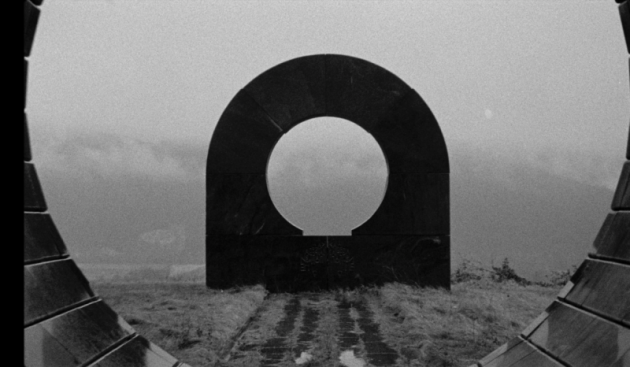
First and Last Men
One such film, First and Last Men came from the late great Johann Johannsson, perhaps best known as the composer of many of Denis Villeneuve’s recent works. The film builds an enigmatic sci-fi story out of stunning images of brutalist architecture, a voice-over from the inimitable Tilda Swinton and Johannsson’s trademark blend of music and sound-design to create a monochromatic mood piece traversed by rhizomatic waves of regret and melancholy, where the purposefully obscure narrative is less important than the almost physical experience of a possible dystopia the late director conjures. Throughout the film. he manages to build a world out of images of ruins, Johannsson’s lens captures them in fanciful angles, these immortal structures of iron and concrete bending and twisting along his exquisite pans and travellings, like lost memories of a golden age long past. The film’s lilting rhythm and unconventional narrative can be difficult to latch on to, but to those on its wavelength First and Last Men is a rare treat for the senses.
In a similar vein, Red Moon Tide, the debut feature from Lois Patino, aims for the eternal vastness of myths with its gorgeous images and allusive fable-like story of a Galician village stuck in time and the ghosts and witches that haunt it. Haunting is an apt word for these tableaux of coastal scenes and frozen bodies on which Patino overlays soft-spoken monologues, lost stories and the ever-present sound of the sea. There are echoes of a story here, Patino prefers to build up his world and characters in half-tones, traces, all the better to evoke the out of time feeling the film so beautifully nails. And so, the viewer will have to make his way into this world by himself guided by the film’s gentle rhythms and Patino’s absolute mastery of light and composition. As the title alludes to, the last part of the film is bathed in red light lending everything an other-worldly hue, climactically capping off an entire film in which light and darkness are at the center of an enigmatic mesmerizing dance.

This is Not a Burial, It’s a Resurrection
Landscape is also a central character in the stirring, stoic drama This is not a Burial, It’s a Resurrection from Lemohang Jeremiah Mosese, an impeccably directed story of resilience and tradition in the face of an uncaring, encroaching modernity. Following Mantoa, an 80 year-old widow, and her quest to save the ancestral burial site of her people from destruction by a reservoir project, the film respectfully charts this Sisyphean endeavour with quiet reverence, letting the spaces, faces and bodies tell their tale at a polite remove, favouring static establishing shots and close-ups filled with dignity and empathy. When we first find her, Mantoa is a woman who had accepted death, but must return to the world of the living to protect her way of life and her ancestors. She is another phantom in a festival full of them, an envoy from the past that is achingly, beautifully human.
Phantoms and traces are also central to one of the best films of the fest, Christian Petzold’s Undine a spectral transposition of the Undine legend to modern day Berlin. The film is somewhat of a departure from the Berliner Schule stalwart here making a movie set in the present day after his recent trilogy of historical films, and bringing us something which at a distance almost resembles a rom-com. The film follows Undine a museum tour guide who specializes in the architectural history of Berlin and her whirlwind romance with an underwater welder following a meet-cute at a café. From this simple premise, Petzold gracefully builds out a meditation on history, love and the way we change along with the places we know with his usual deeply evocative, classical style, here spiced up with intriguing touches of magical realism. Petzold’s cinema is one of ghosts, of revenants, of haunted pasts and pregnant silences. Of modern filmmakers, he uniquely understands the simple power of the cut, of minute changes in lighting to illuminate an unseen world and tease out waves of unsuspected emotions. Undine is like a placid lake, a shimmering surface hiding unforeseen depths.
On the other end of the spectrum were a number of films which took as their subject interior spaces, the domestic, oftentimes focusing on a single home and letting their gentle humanism irradiate onto a larger world. The house as the site of the familial was at the centre of the tenderly observed Moving On from first time filmmaker Yoon Danbi. A delicate story of a father and daughter moving into their grand-father’s house, the film unfolds simply as generations clash, all seen from the eyes of young Okjoo who must find a way to grow in this infertile soil. The film’s gentle rhythms and unfussy realism still allow for drama to peek in, the darker edges lending depths to this sweetly good-natured portrait. A simple well-told coming-of-age that announces an empathetic voice amidst Korea’s recent wave of female filmmakers.
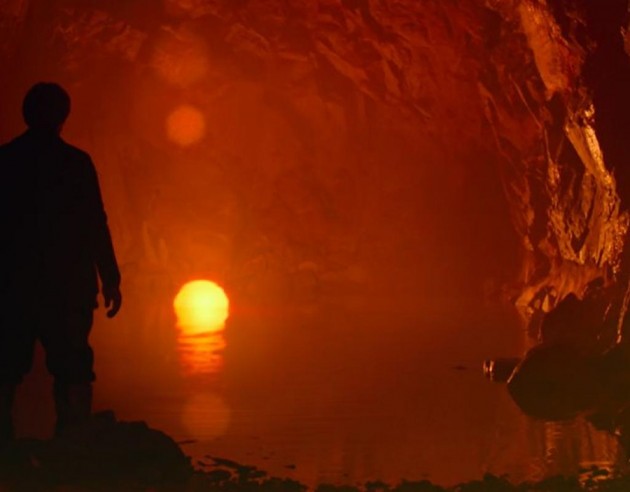
Siberia
Working against such a clear delineation between outside and inside was Abel Ferrara’s new film Siberia, a nocturnal descent into the anxiety of its iconoclast maker starring his on-screen alter ego Willem Defoe. If last year’s Tommaso was the portrait of the anguished artist as he lives his life in broad daylight, Siberia is made up of the visions that keep Ferrara up at night, continuing to explore his anxiety around his newfound familial happiness and the regrets that continue to haunt him. As you’ve perhaps already deduced, this is a film that gains greatly from having a degree of familiarity with Abel Ferrara, the character and his work, because this is a supremely personal film, recasting the snowy, desolate vistas of Siberia as the canvas for a broken soul to diagnose itself, to plunge into its unconscious. The film follows a dream logic as Defoe’s character is whisked from one situation to the next, and like most films that operate on dream logic, it is wildly uneven. But what emerges at the end of this long night of the soul, is a psyche that is unafraid to dig into itself, to tear its heart out and show it to us, warts and all.
A similar breakdown of the outside/inside dichotomy was at play in Patric Chiha’s new documentary: If It Were Love. Chiha films the rehearsals for the new dance piece from French choreographer Gisèle Vienne, a conjuration of 1990’s rave culture. Vienne’s innovative approach is to present this site of hedonistic celebration from a remove, letting stories build organically on the dance floor. Chiha observes this process as dancer and character start to merge, invented backstories and real life informing each other in ever more complicated arrangements, interspersing footage of rehearsals with off-the-cuff interviews with the multinational troupe. The film really comes alive in the dance scenes, especially when the dancers all simulate a form of slow-motion, their athletic bodies perfectly slowing down as the flashing lights and driving house beats drown out the soundtrack. In those ecstatic moments we are transported to a new place, at once cinematic and evocative of a past even more distant to us now. In those moments, we feel the full power of art to transport us, an MDMA-laced madeleine for the confined Proust in all of us.
The stage as window to another world is also central to another film, actually an entire project, the massive DAU. For those unfamiliar, DAU, a series of films overseen by Ilya Khrzhanovskiy filmed over multiple years in a large-scale recreation of a soviet-era scientific facility where actors were invited to live out their roles in a project that blurred the boundary between fiction and documentary, cinema and theatre, art and real life. The project has courted its fair share of controversy and I would invite anyone interested to read up on it, it is quite a fascinating and mad endeavour. What we have at the festival is DAU: Natasha from Ilya Khrzhanovskiy and Jekatarina Oertel, only but a piece of the puzzle. However, each film can be seen on its own, focusing on different characters and periods of the institute, this time the abortive love story between a visiting scientist and a restaurant owner who runs afoul of the soviet authorities to violent results. The film is crude, sometime resembling filmed theater more than anything else (fitting given its stage-bound existence). The directors emphasize duration, looking at their characters in unbroken sequence shots, all the better to collapse the distance between the reality of the performance and the artificiality of its fictive apparatus. The results can sometimes be exhausting with scenes of sex and drunken revelry stretching out like a party that never wants to end. But at the end of this exhaustion, when the bodies of the actors appear as tired as their characters, we get to something approaching truth, not a pretty one, maybe even one resembling the confession extracted by a KGB agent from Natasha, but a truth none the less.
Surveillance, before and after the collapse of the Soviet project also ties together a trio of films that explore the subject to varying degrees of quality. Perhaps the worse, but still interesting was Caught in The Net (Vit Klusak and Barbora Chalupova), a documentary following a Romanian film crew’s attempt to catch internet pedophiles using girlish looking actresses over a span of a few days. The premise raises a number of red flags, not least of which because of its similarity to a recent genre of internet videos of pedo-vigilantism that has its own dubious history. As a documentary, Caught in the Net competently follows the process, from casting young-looking actresses, to building little girl’s bedroom sets all the way to finally meeting the horrible men and confronting them. The whole thing crosses a number of lines and left me with a queasy feeling that didn’t solely come from the actions of the despicable men the film presents or the creepy way it blurs their faces, leaving only their eyes exposed. Perhaps some amount of post-screening discussion would have helped to untie some of the ethical knots, but as it stands, this is firmly for the To Catch a Predator crowd.
More palatable was Servants, a splendidly lensed film from Ivan Ostrochovsky about the struggle between young priests and the communist authorities inside a seminary in 1980s Czechoslovakia. Evoking the recent exquisite work of Pawel Pawilokowski in the academy ratio, the film weaponizes its millimetre perfect compositions to plunge us into its claustrophobic world as Michal and Juraj navigate the tumultuous, morally treacherous gray zones of the tenuous alliance between the State and the Church. Bathed in an anxious, austere atmosphere, the film can come off as opaque, but at a swift 80 minutes, it hits like a sucker punch.
Breaking down everything to its Brechtian essence, the new film from Romanian director Radu Jude Uppercase Print takes a decidedly unconventional approach to the subject of state surveillance under the Ceausescu regime. Using real records of a case of graffiti in late 80s Bucarest, Jude has his actors read out theirs line directly to us, digging into the banal, bureaucratic language of state oppression. Jude juxtaposes this with images taken from propagandistic films and television broadcast of the time, letting the viewer soak up the irony and the cognitive dissonance of the Ceausescu regime. At two hours, the film perhaps overstates its point, but remains interesting throughout.
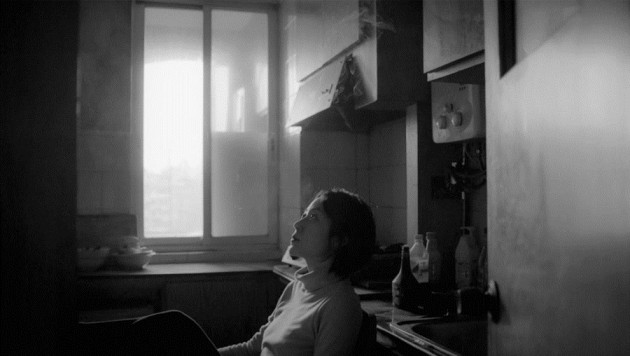
The Cloud in Her Room
Some films also resonated by their relationship to time. The impressive debut The Cloud in Her Room, a shimmering monochromatic jewel of diffuse moments bubbling to the surface like half-remembered dreams reminded me of the collapse of time during the first confinement. Everything bleeds into each other in this tale of a bohemian student, her romantic foibles and flaky parents as she traverses her early adulthood in a newly emergent Chinese middle class. Moments and reveries drift into one another in this beautifully evocative look at modern loneliness and ennui. One comes out of the movie as from an afternoon nap, woozy but pleased.
Of course, if one of the pleasures of attending a film festival is to discover unforeseen resonances between works being made all over the world, not every film can so easily be put in relation, become a part of a narrative. Some films are just excellent in their own right, little pockets of quality that whilst contributing to the story of cinema for that year, cannot so easily be mapped onto others. One such film was There is no Evil, a film told in four vignettes all touching on the issue of the death penalty in Iran from recently jailed filmmaker Mohammad Rasoulof. As with any collection of short films, there will be favourites (I personally preferred the first and third sections), but the film stands out for its thematic unity, viewing the question of the death penalty from a variety of angles, and its humanist tone. The film is at its best when centering on its characters, letting the question of the death penalty percolate in the background until a magistral chute as in the first story or as an unspoken, malignant frequency humming in the back like in the third and last story.
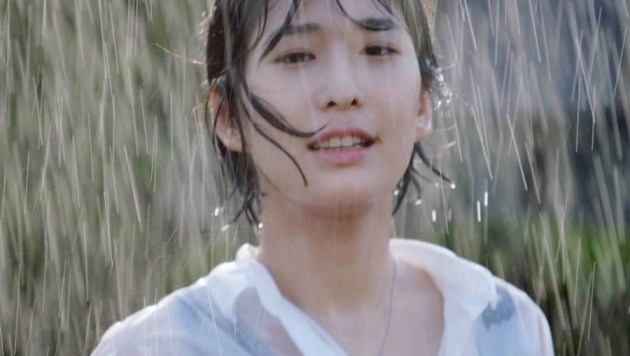
Red Post on Escher Street
Another standout was Sion Sono’s latest madcap rumination on the art of filmmaking, Red Post on Escher Street, a making-of drama which follows the production of the latest film from a hotshot director, from the open auditions to the whirlwind filming with a comically critical, but never cynical eye towards the Japanese film industry. The film immediately surprises with its large cast of character and its focus on extras with the bigwigs being placed in more supporting role, shuffling the usual on-set hierarchy for one where true passion rules. The film’s innovative structure, composed of vignettes focusing on different characters, keeps up the pace towards Sono’s usual ecstatic finale, a raucous cinematic revolution where extras take over the film. In Sono’s best work, he manages to intelligently push the envelope, fashioning big melodramatic moments, wild visual excesses and penetrating questions about his subject into entertaining thrill-rides. And this new film is no exception.
Going into the fest, the most topical film was Apples from Greek filmmaker Christos Nikou, about a mysterious epidemic of amnesia tearing through Athens. The film follows a recent sufferer as he undergoes a program meant to bring back his memory. He watches tapes and goes on excursions doing activities that he’s assured will lead to his recovery, even building something of a connection with a woman further along the recovery process. Hallmarks of the Greek Weird Wave are recognizable in the film’s deadpan humour and stony affect, but it is much sweeter than your average Lanthimos copy locating the small tragedies of having to rebuild your life from the ground up amidst the banal absurdity of the everyday. Ultimately, the film is a simple but potent metaphor for returning to life. The film is beautiful because it is a story about coming back, picking up the pieces and learning to live again, that follows the tentative rhythms of recovery. For that, it more than handily earns the title of most relevant film of the festival.
Although the circumstances were vastly different from last year’s edition, FNC managed to put on an edition filled with interesting movies and some absolute stunners. As the province was closing down again, the festival offered something special in a sea of streaming content; a curated selection of the best of contemporary cinema that beyond simply providing entertainment, allowed profound reflections on a number subject. In this text, I focused on a few threads that beckoned at me from the program, but there are surely as many ways of living the festival as there are viewers, each their own, but still together.


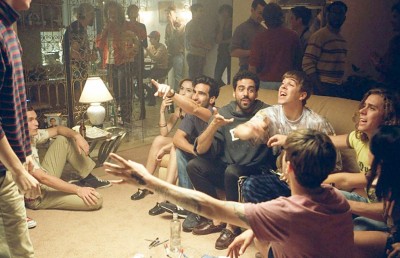
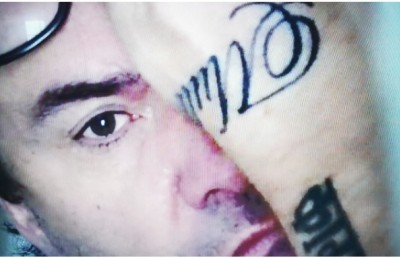
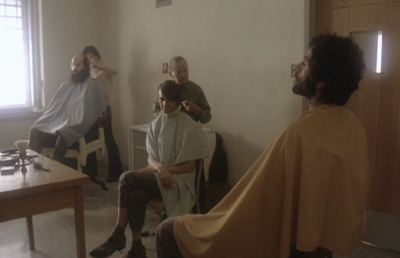
-small_400_258_90_s_c1.jpg)







